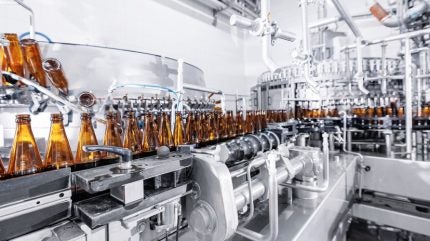
In today’s competitive marketplace, efficiency in packaging operations can mean the difference between profit and loss.
Businesses are turning to automation as a key solution to streamline packaging processes, reduce waste, and meet rising consumer expectations.
As global supply chains grow more complex and e-commerce continues its rapid expansion, automated packaging systems are proving indispensable for companies aiming to boost productivity and remain agile.
With technologies evolving rapidly, packaging automation no longer belongs exclusively to large manufacturers. From robotic palletisers and automatic labelling machines to smart conveyor systems and AI-driven quality control, a wide range of solutions is now accessible to businesses of all sizes.
These tools offer consistent performance, reduce reliance on manual labour, and ensure faster turnaround times.
Reducing human error and improving consistency
One of the most significant advantages of packaging automation is its ability to minimise human error. Manual packaging processes often suffer from inconsistencies in labelling, sealing, or filling—each of which can lead to product recalls or customer dissatisfaction.
By automating these tasks, businesses can maintain a uniform output and uphold brand quality across large volumes of products.
Technologies such as vision inspection systems and automated checkweighers allow for real-time monitoring and correction of packaging issues. These tools ensure that only products that meet precise criteria make it through to distribution, significantly reducing waste and rework.
Moreover, smart packaging lines can self-adjust based on product specifications, meaning fewer delays caused by changeovers or misalignment.
For sectors like food, pharmaceuticals, and consumer electronics—where precision is critical—automation enhances both regulatory compliance and consumer safety. When deployed correctly, these systems can maintain detailed logs for auditing purposes and track every package throughout the supply chain, improving traceability and accountability.
Increasing throughput and scaling operations
Speed is a defining factor in modern packaging logistics. Manual processes simply can’t keep pace with the demands of high-volume production.
Automated packaging machines can operate around the clock with minimal supervision, helping businesses handle larger order volumes without compromising on quality or delivery timelines.
By automating repetitive tasks such as case erecting, box sealing, shrink wrapping, and product sorting, companies can significantly increase throughput.
Integration with warehouse management systems (WMS) and enterprise resource planning (ERP) software also allows real-time coordination between packaging lines and inventory control, reducing bottlenecks and ensuring optimal resource use.
Scalability is another key benefit. With modular automation systems, businesses can begin with basic functions and gradually expand their capabilities as demand grows. This flexibility is particularly useful for small and medium-sized enterprises (SMEs) that need to manage costs while preparing for future growth.
Cloud-based systems and remote monitoring further enhance scalability, enabling managers to oversee operations and make adjustments without being on site.
Lowering costs and enhancing sustainability
Although the upfront investment in packaging automation can be substantial, the long-term cost savings are hard to ignore.
Automated systems reduce the need for manual labour, lowering staffing expenses and decreasing the likelihood of workplace injuries. With energy-efficient equipment and optimised workflows, operating costs also decline over time.
Sustainability is an increasingly important consideration in packaging. Automated processes are designed to minimise material waste by cutting packaging to precise dimensions and reducing overuse.
Advanced software can determine the most efficient packaging layouts and suggest sustainable materials that meet performance requirements without unnecessary bulk.
Furthermore, the data generated by automated systems can inform future improvements. Analytics dashboards track production metrics, downtime, error rates, and energy usage, giving managers valuable insights into how to optimise processes further.
This level of intelligence helps businesses achieve both economic and environmental goals—an essential balance in an era of climate responsibility and heightened regulatory scrutiny.
By embracing packaging automation, companies can align operational efficiency with green objectives, such as reducing carbon emissions and improving recyclability.
It also enables them to respond to shifting consumer trends, such as the preference for minimal and eco-friendly packaging designs.
Looking ahead
Packaging automation is no longer a luxury for the few but a necessity for the many. It offers a powerful route to improved consistency, faster production, reduced costs, and enhanced sustainability.
As customer expectations evolve and supply chain complexity increases, businesses that invest in automated packaging solutions will be better positioned to deliver reliable, timely, and environmentally conscious products.
Whether operating in food production, retail, pharmaceuticals, or consumer goods, companies that streamline their packaging processes through automation stand to gain a crucial edge in a demanding and rapidly changing marketplace.
Embracing this technology not only ensures operational resilience but also lays the groundwork for long-term success.







